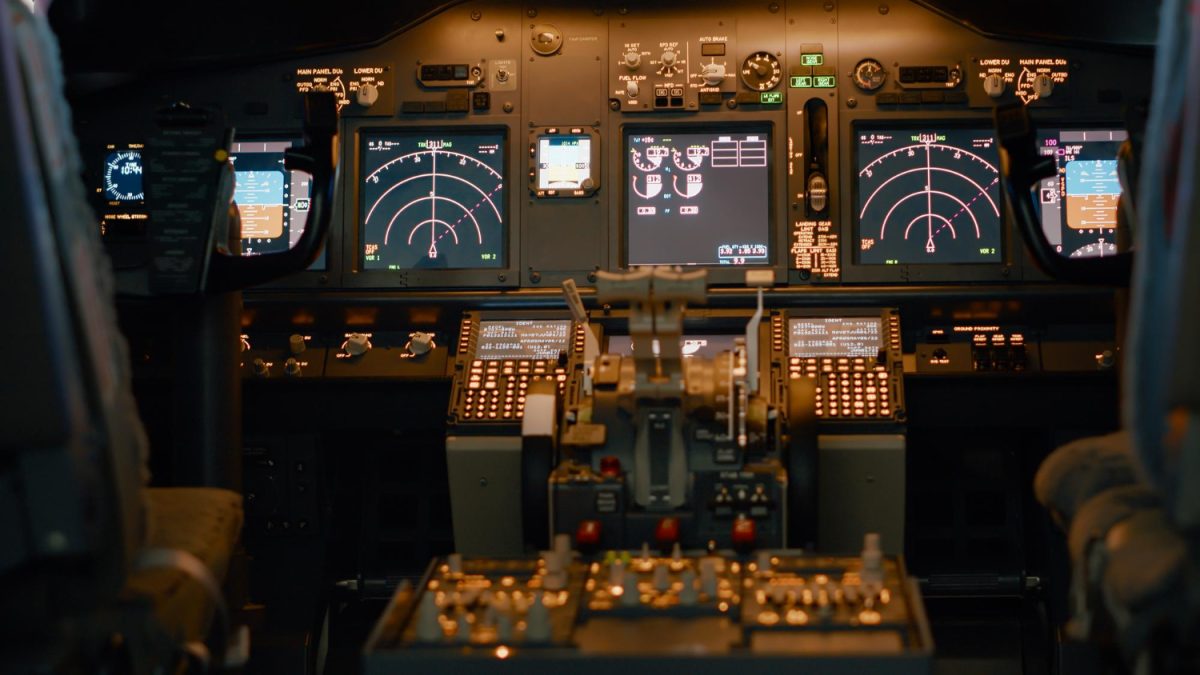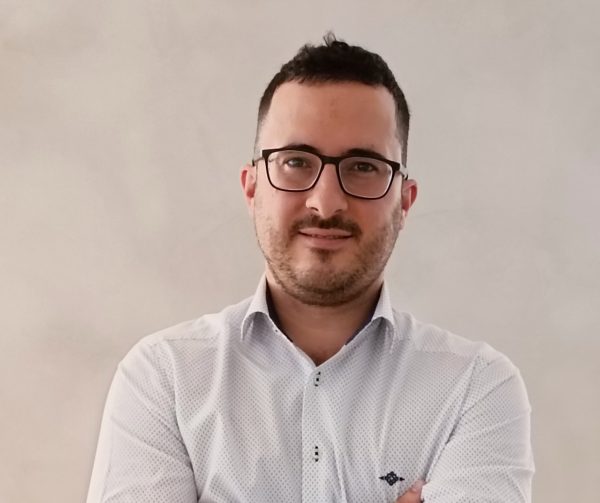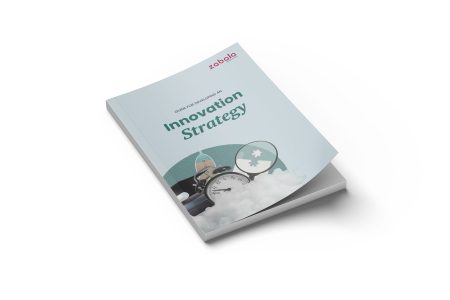
Opinion
Aerospace
From the stars to agriculture, all the R&D opportunities arising from the Space sector

Yann Poulain
Consultant
DECARBONISATION
We analyse the trends in the aeronautical sector to see which technologies will be essential for its decarbonisation


Innovation Consultant in Aviation field
The aeronautical sector is one of the sectors of the economy that dedicates the highest percentage of its turnover to R&D&I. Indeed, according to figures from the European Aerospace, Security and Defence Industries Association (ASD), the civil branch of this highly industrial sector spends 7,800 million euros on research and development, has an annual turnover of approximately 106,400 million euros, and has a significant impact on job creation: in Europe, it supports around 362,700 direct jobs. By 2038, the industry is expected to contribute $1.7 billion to global GDP.
Clearly, it is also a driving force for innovative products, processes and services that are initially developed to solve its own challenges, but which subsequently find a niche application in other sectors. In this sense, it has earned the nickname of a highly innovative sector, and analysing future trends can be of great interest in order to anticipate which technologies will dominate the market in the coming years.
In recent years, the European Commission has pursued the objective of decarbonising aviation and thus achieving climate neutrality, in line with the European Green Deal. To this end, it has established a set of milestones for the short (2030), medium (2035) and long term (2050) in various categories, such as vehicles, propulsion systems, infrastructures, operations and services and fuels, which will serve as a guide so that all agents involved in the R&D&I ecosystem (universities, technology centres and industry) can take actions to pursue the sustainability of the sector.
There are multiple strands of future trends driving current research efforts, and one of the hottest debates is about which fuel will be positioned as the fuel of the future. Among the possibilities is the study of new sustainable fuels for propulsion plants, known as SAFs or Sustainable Aviation Fuels. SAFs refer to synthetic fuels that are produced differently from conventional fuels and are categorised as drop-in fuels, i.e. fuels that do not require a change in engine structures and subsystems in order to be used.
In relation to these fuels, the challenge of being able to produce them on a larger scale and make them available at airports is identified, a challenge which, if it can be met, will make it possible for UAS to be the fuels of the future for decarbonising long-range flights. In addition, the definition of UFAS itself needs to be modified in order to open up the range of what is actually considered as such.
On the other hand, there is hydrogen. This clear case of non-drop-in fuel requires modifications to the propulsion plant and aircraft subsystems in order to be used. There are two ways in which hydrogen can be used to propel an aircraft: using it in a gas turbine for combustion, or using it in a fuel cell to generate electrical energy, obtaining water as a reaction product and electricity. Both options are positioned as the most viable alternative to decarbonise medium-range journeys and to provide a solution, specifically in the case of fuel cells, to urban micro-mobility through the motorisation of Vertical Take-Off and Landing vehicles (VTOL), with the added challenge of the need to create the necessary infrastructure for hydrogen management at airports and “vertiports”.
Major efforts are also being made to electrify aircraft, which means equipping them with powerful electric motors to make them hybrid/electric. This is seen as the most suitable option for decarbonising short-haul journeys.
As can be guessed, it may not be appropriate to say that one solution will prevail over the other, but rather that they all have their range of applicability and only when the time comes will it be possible to see which of them is most suitable to meet the needs of the moment.
Beyond the fuel debate, highly innovative technology is being developed to improve aerodynamics and the aerodynamic lift/resistance ratio (known as aerodynamic efficiency), with the development of integral architectures that could be considered “futuristic”, such as the flying wing, an architecture in which the entire fuselage of the aircraft generates lift. Despite having great aerodynamic advantages, there are several operational drawbacks here, such as the high vertical accelerations that wingtip passengers would suffer if the aircraft were to pitch or roll.
Other aerodynamic improvements relate to the design of the wing and nacelles to maintain laminar flow, avoiding turbulent transition or worse, shedding (which substantially increases aerodynamic drag), such as high aspect ratio wings. In this way, the effects of the phenomenon known as flutter can be reduced.
Linked to the improvement of propulsive efficiency are ultra-high bypass ratio turbofans, i.e. capable of moving a much higher secondary flow than the primary flow, which translates into increased thrust. High-strength, low-density materials produced from additive manufacturing technologies, or ceramic matrix materials with coatings, capable of withstanding the high temperatures at the combustion chamber outlet, are also currently being analysed.
The trend in this field focuses on the improvement of airport infrastructures (both on the air and on the ground) and on the construction of so-called “vertiports”, VTOL take-off and landing spaces for urban transport of goods and people. On the horizon, the development of digital twins of airports is seen as an activity that could greatly help the simulation of ground operations. In addition, new algorithms and systems are being developed in the quest for greater air traffic control capacity.
The European Commission’s initiatives in the aeronautical sector are articulated through various funding instruments. On the one hand, there is the Horizon Europe framework programme, whose Cluster 5 (Climate, Energy and Mobility) includes four topics related to aviation. On the other hand, there are various public-private partnerships (known as “JUs”), such as Clean Aviation JU, SESAR 3 JU and Clean Hydrogen JU, aimed at promoting the development of disruptive technologies in the field of aviation, air navigation and hydrogen production, storage and transport, respectively.
It should be noted that the first of these (CAJU) establishes three fundamental pillars for such development: hybrid-electric aircraft, hydrogen-powered aircraft and ultra-efficient short- and medium-range aircraft.
This partnership also includes a segment that touches on transversal but fundamental areas, such as certification processes (in which the involvement of the European Union Aviation Safety Agency is highly recommended) and the search for synergies with national programmes.
Furthermore, in terms of the time axis, two phases can be distinguished: a first phase covering the period 2022-2025 dedicated to the identification of disruptive concepts with high potential, and a second phase covering the period 2026-2031, aimed at maturing, integrating and demonstrating the technologies identified. This year, the second CAJU call for proposals has been launched, with a closing date of 11 May, which aims to finance 9 projects (of which 8 are innovation actions and one is a coordination and support action) with a total estimated budget of 137,75 million euros.
In the case of SESAR 3 JU (Single European Sky ATM Research 3 JU), the priority is to manage the growing demand for air traffic. To this end, a call for proposals is expected to be launched in the middle of this year.
If you are a large company, an SME or a university/technology centre and you are interested in submitting a project proposal in the field of aeronautics, you have doubts about the eligibility conditions or you have any other questions related to these programmes, do not hesitate to contact Zabala Innovation so that we can help you in the preparation of the proposal or in the management of the project. Also, join our Kaila network, a great search tool with a complete database, to find more information about the different calls and projects.

Bilbao Office
Innovation Consultant in Aviation field

Opinion
Aerospace

Yann Poulain
Consultant

Opinion
HORIZON EUROPE

Javier Uranga
Entrepreneurship Consultant

Opinion
CITIES

Future trends in the aeronautics sector

News
INTERVIEW
We interviewed Sergio Úbeda, leader of Zabala Innovation's Transport Area

Opinion
Aerospace

Yann Poulain
Consultant

Publication
INNOVATION CONSULTANCY
With this document, written by our colleague Guillermo Dorronsoro, we want to offer you a guide to carry out an innovation strategy in your company
The important thing is not to keep moving, but rather to know in which direction to go. Our 37% success rate proves that we know how to guide our clients.
This website uses cookies so that we can provide you with the best user experience possible. Cookie information is stored in your browser and performs functions such as recognising you when you return to our website and helping our team to understand which sections of the website you find most interesting and useful.
Strictly Necessary Cookie should be enabled at all times so that we can save your preferences for cookie settings.
This website uses Google Analytics to collect anonymous information such as the number of visitors to the site, and the most popular pages.
Keeping this cookie enabled helps us to improve our website.
Please enable Strictly Necessary Cookies first so that we can save your preferences!
This website uses the following additional cookies:
(List the cookies that you are using on the website here.)
Please enable Strictly Necessary Cookies first so that we can save your preferences!